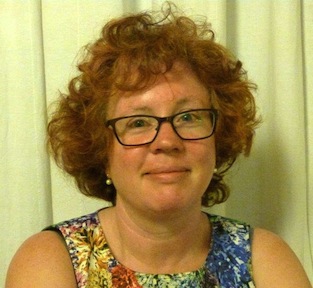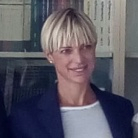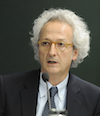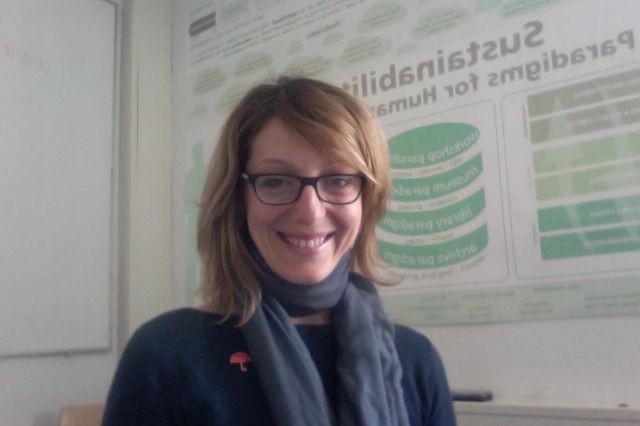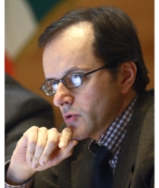Studying at the University of Verona
Here you can find information on the organisational aspects of the Programme, lecture timetables, learning activities and useful contact details for your time at the University, from enrolment to graduation.
Academic calendar
The academic calendar shows the deadlines and scheduled events that are relevant to students, teaching and technical-administrative staff of the University. Public holidays and University closures are also indicated. The academic year normally begins on 1 October each year and ends on 30 September of the following year.
Course calendar
The Academic Calendar sets out the degree programme lecture and exam timetables, as well as the relevant university closure dates..
| Period | From | To |
|---|---|---|
| I semestre | Oct 1, 2015 | Jan 9, 2016 |
| II semestre | Feb 22, 2016 | May 31, 2016 |
| Session | From | To |
|---|---|---|
| Appelli d'esame LINGUE - sessione invernale | Jan 11, 2016 | Feb 20, 2016 |
| Appelli d'esame LINGUE - sessione estiva | Jun 3, 2016 | Jul 29, 2016 |
| Appelli d'esame LINGUE - sessione autunnale | Aug 29, 2016 | Sep 29, 2016 |
| Session | From | To |
|---|---|---|
| TESI DI LAUREA - LINGUE | Nov 18, 2015 | Nov 20, 2015 |
| TESI DI LAUREA - LINGUE | Mar 30, 2016 | Apr 1, 2016 |
| TESI DI LAUREA - LINGUE E LL.SS | Jul 6, 2016 | Jul 8, 2016 |
| TESI DI LAUREA - LINGUE E LL.SS | Nov 23, 2016 | Nov 25, 2016 |
| Period | From | To |
|---|---|---|
| FESTA DELL'IMMACOLATA | Dec 8, 2015 | Dec 8, 2015 |
| VACANZE DI NATALE | Dec 23, 2015 | Jan 6, 2016 |
| Vancanze di Pasqua | Mar 24, 2016 | Mar 29, 2016 |
| FESTA DELLA LIBERAZIONE | Apr 25, 2016 | Apr 25, 2016 |
| FESTA DEI LAVORATORI | May 1, 2016 | May 1, 2016 |
| FESTA DEL SANTO PATRONO SAN ZENO | May 21, 2016 | May 21, 2016 |
| FESTA DELLA REPUBBLICA | Jun 2, 2016 | Jun 2, 2016 |
| Vacanze estive | Aug 8, 2016 | Aug 15, 2016 |
Exam calendar
Exam dates and rounds are managed by the relevant Foreign Languages and Literatures Teaching and Student Services Unit.
To view all the exam sessions available, please use the Exam dashboard on ESSE3.
If you forgot your login details or have problems logging in, please contact the relevant IT HelpDesk, or check the login details recovery web page.
Academic staff
 angela.alaimo@univr.it
angela.alaimo@univr.it
 alessandro.bigardi@univr.it
alessandro.bigardi@univr.it
 tiziana.mancinelli@univr.it
tiziana.mancinelli@univr.it
 sara.paolini@univr.it
sara.paolini@univr.it
 fabioantonio.scrignoli@univr.it
fabioantonio.scrignoli@univr.it

Zaccarello Michelangelo
 michelangelo.zaccarello@univr.it
michelangelo.zaccarello@univr.it
 +39 045 802 8330
+39 045 802 8330
Study Plan
The Study Plan includes all modules, teaching and learning activities that each student will need to undertake during their time at the University.
Please select your Study Plan based on your enrollment year.
1° Year
| Modules | Credits | TAF | SSD |
|---|
1st foreign language2nd foreign language1st foreign literature2nd foreign literature2° Year activated in the A.Y. 2016/2017
| Modules | Credits | TAF | SSD |
|---|
2nd foreign literature1st foreign literature1st foreign language2nd foreign languageOne course to be chosen among the following3° Year activated in the A.Y. 2017/2018
| Modules | Credits | TAF | SSD |
|---|
2nd foreign language1st foreign languagePhilology of the first or second language| Modules | Credits | TAF | SSD |
|---|
1st foreign language2nd foreign language1st foreign literature2nd foreign literature| Modules | Credits | TAF | SSD |
|---|
2nd foreign literature1st foreign literature1st foreign language2nd foreign languageOne course to be chosen among the following| Modules | Credits | TAF | SSD |
|---|
2nd foreign language1st foreign languagePhilology of the first or second language| Modules | Credits | TAF | SSD |
|---|
Legend | Type of training activity (TTA)
TAF (Type of Educational Activity) All courses and activities are classified into different types of educational activities, indicated by a letter.
History of Illustration (2016/2017)
Teaching code
4S00903
Teacher
Coordinator
Credits
6
Language
Italian
Scientific Disciplinary Sector (SSD)
L-ART/02 - HISTORY OF MODERN ART
Period
I SEMESTRE dal Oct 3, 2016 al Jan 21, 2017.
Learning outcomes
This course provides the elements students need to understand the relationship between writing and the figurative apparatus, including book ornamentation, and to be able to assess the aesthetic, communicative and didactic functions of book illustration.
It begins with the consideration of the book as an “artistic” product with its own formal and stylistic features. To this end looking to the past, even the remote past, serves as a premise for approaching the book with greater awareness and understanding how its design and production have evolved in contemporary communicative media (video, computer-based, digital etc.). In other words, the educational objectives are to provide a historical background combining forms of continuity and technological innovations, aesthetics and communication, that will be useful for students interested in pursuing a career and making choices in the field of publishing.
Program
The course focuses on and brings together three fundamental elements. The first concerns the aesthetics of font and typesetting, that is, the “architectural organism” considered in terms of its rule-bound formal aspects, while contemporary examples are approached as instances of experimental and provocative “breaks” with tradition. To this end, the course briefly addresses the main stages in the emergence of the alphabets of ancient civilizations up to the formation of Roman writing, the foundation of the classical tradition of all subsequent printing activities including contemporary examples.
There will also be institutional references to the significance of writing and the image in relation to texts in ancient civilizations, including those outside of Europe and especially in connection with their religions and symbolic or sacred values.
The second element regards the procedures used to create figurative designs and illustrations, for example illumination, woodblock and intaglio in their various forms (direct and indirect, involving the graver and etching with its multiple variations) leading up to the most modern industrial systems of reproduction, beginning with lithography and going on to cover the ensuing evolution of industrial printing. The course also addresses the terminology used in the various European languages.
The third element involves a diachronic investigation of the history of illustrated books from the birth of the printing press to the modern and contemporary ages, making note of the typological features which, albeit through changing styles and techniques, have persisted over time. The study of this latter element will involve considering the structural nature of the code and the relationship between the field of writing and the field of the image from late antiquity through the main junctures of the Middle Ages, such as the Romanesque and Gothic periods.
Pedagogically speaking, students will be guided in learning the stylistic and evaluative method of analysis applied to illustrated books. The same method is used in the course on modern art history and this is another reason why the latter course should be considered preliminary. In the classroom, students will be engaged in discussion following a seminar-style approach in order to aid them in acquiring the appropriate analytical vocabulary.
Approaching the history of illustration using the methods of art history requires locating the key figures of the art of printing and illustration within the geography and history of Italian and European culture.
Due to the brief duration of the course, it will not be possible to hold classes at libraries or temporary exhibitions. Instead, students will be provided with more in-depth information during class sessions, particularly as concerns the main stages of the history of illustration, including contemporary illustration.
At any rate, students will be permitted to choose these arguments according to their own interests. On the basis of the specialized literature presented in class, students will have to choose an exam topic for which they demonstrate having assimilated the methodological guidelines provided throughout the course.
* Introduzione. Orizzonti della disciplina.
1.Illustrare e decorare. Terminologia e significati. Decorum e decorare nell’estetica classica e moderna.
2. La nascita della scrittura. Il segno e la materia. Primi supporti e prime testimonianze. La scrittura cuneiforme, la scrittura egizia. Il papiro. Il rotolo.
3. La scrittura dei romani.
4. Dal rotolo al codice.
5.- 6. La tecnica della miniatura. I primi codici miniati e le esemplificazioni dei rapporti tra testo e immagine. Il Virgilio Vaticano, l’Iliade Ambrosiana, il Dioscoride di Vienna.
7. Civiltà, religioni libri e illustrazioni: ebraismo, Islam etc.
8. Le regioni del codice illustrato.
La chiesa di Roma e la funzione dell’immagine. La diffusione del cristianesimo, l’ordine benedettino e la produzione dei codici illustrati. La chiesa di Bisanzio e la civiltà del codice illustrato, l’iconoclastia e i suoi presupposti teologici. Palestina, Siria e Africa cristiana.
La cultura insulare e la civiltà del codice illustrato.
9. Periodizzazione e grandi pagine della storia del a miniatura nel Medioevo.
La civiltà carolingia e Ottoniana. Il romanico, il Gotico. L a miniatura del Gotico italiano. Il Tardogotico in Europa e in Italia.
10.-11 Il codice illustrato umanistico. L’invenzione della stampa e i primi libri illustrati in Germania e in Italia, generi letterari e funzione dell’immagine. Incunaboli illustrati con particolare riguardo ai proto-tipografi romani e alla situazione di mercato a Venezia fino ad Aldo Manuzio.
12. I teorici del carattere. Lettura e commento della Iubilatio. Alberti, Felice Feliciano, Mantegna e la littera mantiniana, Damiano da Moille, Luca Pacioli, De Divina proportione.
13. - 14 La xilografia. I grandi protagonisti della tecnica xilografica. Schongauer, Dürer, Luca di Leida, Tiziano, Ugo da Carpi.
15. La calcografia, aspetti della tecnica dell’incisione diretta. Il bulino, la puntasecca, la maniera nera. I protagonisti della prima fase. Pollaiolo, Mantegna, Raimondi.
16. La calcografia, aspetti della tecnica dell’incisione indiretta. L’acquaforte, l’acquatinta, ceramolle e lavis. I primi protagonisti del “facil modo che è bellissimo”: Parmigianino, Barocci, Callot; Cort, Carracci.
17. Il frontespizio, origini ed evoluzione. Funzioni e tipologie figurative.
18. Momenti fondamentali del carattere tipografico nel Cinquecento, Manuzio e il suo lascito. I protagonisti in Italia e in Europa.
19. Linee fondamentali dell’editoria illustrata del Cinquecento.
20. I grandi del carattere tipografico in Italia e in Europa nel Seicento.
21. Linee fondamentali dell’editoria illustrata nel Seicento.
22. Rembrandt incisore.
23. Linee fondamentali dell’editoria illustrata nel Settecento.
24. Piranesi. Tecnica, i generi, il mercato internazionale. Piranesi archeologo, le Carceri d’invenzione.
25. I grandi del carattere nel Settecento in Europa. Bodoni e l’estetica neoclassica. I manuali tipografici.
26. La litografia, tecnica; la serigrafia, tecnica.
27. Le innovazioni della tecnica di stampa e l’editoria divulgativa illustrata.
La nascita della fotografia e illustrazione, evoluzioni tecniche, nuove possibilità riproduttive, nuovi filoni editoriali. Il retino.
28. Industrializzazione del carattere nell’Ottocento.
29. Il manifesto, la nascita la diffusione in Italia, in Europa e Oltreoceano.
30. La nascita del libro per l’infanzia. Il fumetto.
31. Movimenti e avanguardie, riscontri nelle creazioni tipografiche ed editoriali.
Morris e Arts and Crafts, Art Nouveau, Liberty, Secessione, Espressionismo.
Cubismo, Futurismo, Dada, avanguardie russe. Bauhaus e i principi del moderno design.
Pop art. Tendenze e personalità del secondo Novecento e contemporanee.
32.-33.
I protagonisti del Novecento in Italia. Ratta e Bertieri. La Scuola del Libro di Urbino. Illustrazione di Stato. Il libro d’arte nel Novecento.
** Conclusioni e nuove prospettive. Dal calamo al torchio, dal computer al digitale. La figura del grafico e del curatore editoriale oggi.
Examination Methods
written exam
Type D and Type F activities
To discover all the teaching activities accredited by the foreign teaching college click here
Career prospects
Module/Programme news
News for students
There you will find information, resources and services useful during your time at the University (Student’s exam record, your study plan on ESSE3, Distance Learning courses, university email account, office forms, administrative procedures, etc.). You can log into MyUnivr with your GIA login details: only in this way will you be able to receive notification of all the notices from your teachers and your secretariat via email and soon also via the Univr app.
Student login and resources
Assegnazione tutore
Attività accreditate D/F
Calendario didattico dettagliato
Cambio lingua curriculare
Competenze informatiche
Competenze linguistiche (prima e seconda lingua)
Competenze linguistiche in triennale (terza lingua CFU F)
Compilazione del piano didattico
Corso di Lingua portoghese
Erasmus+ e altre esperienze all'estero
Linguistic training CLA
Graduation
List of theses and work experience proposals
| Stage | Research area |
|---|---|
| PROGETTO MAMBRINO Stage per bibliografia | Various topics |
Stage e tirocini
Nel piano didattico della laurea triennale in Lingue e culture per l’editoria (L11 ED) è previsto un tirocinio/stage obbligatorio (CFU 6).
Le attività di stage sono finalizzate a far acquisire allo studente una conoscenza diretta in settori di particolare interesse per l’inserimento nel mondo del lavoro e per l’acquisizione di abilità professionali specifiche.
Le attività di stage sono svolte sotto la diretta responsabilità di un singolo docente presso studi professionali, enti della pubblica amministrazione, aziende accreditate dall’Ateneo veronese.
I crediti maturati in seguito ad attività di stage saranno attribuiti secondo quanto disposto nel dettaglio dal “Regolamento d’Ateneo per il riconoscimento dei crediti maturati negli stage universitari” vigente.
- Tutte le informazioni in merito agli stage per futuri studenti sono disponibili alla pagina Stage e tirocini.
- Tutte le informazioni in merito agli stage per studenti iscritti sono pubblicate in MyUnivr - come fare per - stage e tirocini.
- Tutte le informazioni in merito agli stage per le aziende sono disponili alla pagina Stage e tirocini per azienze.
Ulteriori informazioni al seguente link https://www.univr.it/it/i-nostri-servizi/gestione-carriere-studenti-lingue-e-letterature-straniere/stage-e-tirocini-lingue-e-letterature-straniere
